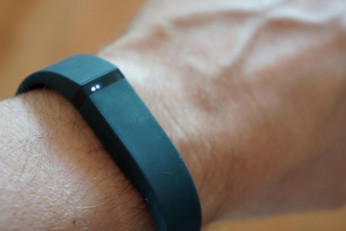Energy law is a hot topic these days. With the constant hubbub regarding global warming, gas prices, and solar power, these buzzwords that were originally heard only in small circles have gained notice and popularity. Another term we might be adding to our collective vocabularies in the near future? Demand response.
Demand response is an “opportunity for consumers to play a significant role in the operation of the electric grid by reducing or shifting their electricity usage during peak periods in response to time-based rates or other forms of financial incentives.”[1] There are various ways for consumers to engage in demand response, including varying prices based on the time of day or market variables.[2] There are also options that allow users to have the power company control their appliances during certain periods, turning them on and off as the overall power grid needs in order to avoid spikes in energy demand and high prices.[3] These consumers are compensated by financial incentives and overall lower energy costs for their homes or businesses.[4]
While this is beneficial to both the consumers and the environment, the question remains as to who controls and regulates the demand response field. In Section 201 of the Federal Power Act (FPA), Congress gave the Federal Energy Regulatory Commission (FERC) the power to regulate interstate transmission of wholesale electricity sales.[5] States retain the ability to regulate any sales that include retail sales and directly involve the end-user consumers.[6] FERC claims to have jurisdiction over the regulation of demand response under Section 206 of the FPA, which states when FERC finds “any rule, regulation, practice . . . affecting such [interstate wholesale] rate . . . is unjust, unreasonable, unduly discriminatory or preferential, [FERC] shall determine the just and reasonable . . . rule, regulation, practice . . . .”[7] FERC says demand response programs affect interstate wholesale energy prices, and therefore FERC has jurisdiction over setting the regulations and practices surrounding demand response programs. Some state regulators and demand response providers say that the energy sales occur at a retail level, not the wholesale level, and therefore FERC does not have jurisdiction according to the FPA.
This is a complex issue of preemption and statutory interpretation. So complex, in fact, that a petition for certiorari is pending for the Supreme Court to hear whether or not FERC can regulate demand response programs.[8] If certiorari is granted, this will not be the first energy related case the Supreme Court decides in recent days.
On April 21, 2015, in Oneok, Inc. v. Learjet, Inc., the Court decided federal natural gas laws do not preempt state laws regarding sales at any the beginning of the chain of natural gas movement, from wellhead to pipeline.[9] This decision helps those in favor of state regulation of demand response, but at the same time, there is almost no state regulation to be had. The programs are incredibly new and challenging to figure out. If the Court follows its decision in Learjet, it would seem that it would favor state regulation, as demand response, although technically connected to the interstate power system, most directly includes retail consumers, not wholesale buyers. In the decision being appealed, the D.C. Circuit found that demand response affects wholesale rates, but the actual demand response activity is done at the state and consumer level – so FERC does not have jurisdiction.[10] FERC disagrees, and is now petitioning for certiorari to gain jurisdiction.[11]
This is an important decision, as the Court would have to balance states’ rights with the importance of federally regulating a practice that is so new, but so important. This decision will impact how the nation handles this new energy technology, and it will be landmark in energy efficiency in years to come.
[1] U.S. Dep’t of Energy, Demand Response, ENERGY.GOV, http://energy.gov/oe/technology-development/smart-grid/demand-response (last visited Apr. 22, 2015).
[2] See id.
[3] See id.
[4] See id.
[5] See Federal Power Act, 16 U.S.C. § 824(b)(1) (2012).
[6] See id.
[7] 16 U.S.C. § 824e(a) (2012).
[8] See Jeff St. John, The Future of Demand Response: How a Legal Challenge Could Dramatically Change the Industry, greentechgrid, http://www.greentechmedia.com/articles/featured/ferc-order-745-the-supreme-court-and-the-future-of-demand-response (last visited Apr. 22, 2015).
[9] See generally Oneok, Inc. v. Learjet, Inc., 575 U.S. ____ (2015) (holding that Section Five of the Natural Gas Act did not preempt state law).
[10] See generally Electric Power Supply Ass’n v. FERC, 753 F.3d 216 (2014) (holding Section 201 of the Federal Power act prohibits FERC from intruding on state jurisdiction regarding demand response).
[11] See St. John, supra note 8.





